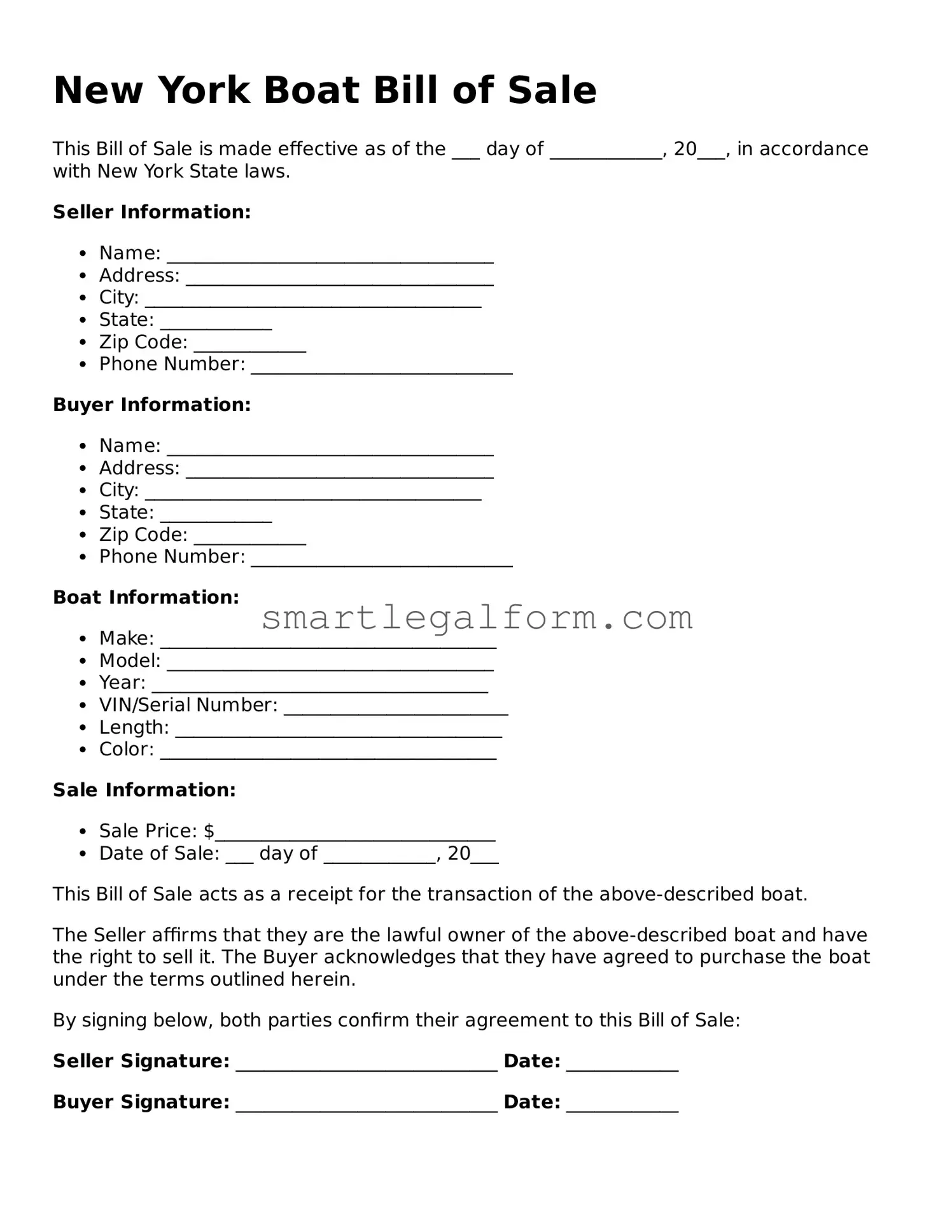Filling out the New York Boat Bill of Sale form can seem straightforward, but there are several common mistakes that people often make. One frequent error is neglecting to include all required information. Buyers and sellers must ensure that they provide their names, addresses, and contact details. Missing even one piece of information can lead to delays or complications in the transaction.
Another common mistake involves the description of the boat. It’s essential to accurately describe the vessel, including its make, model, year, and hull identification number (HIN). Inaccuracies can create confusion and may complicate the registration process later on.
Many people also forget to include the sale price. This detail is crucial, as it establishes the value of the transaction for tax purposes. Leaving it out can lead to issues when the buyer attempts to register the boat with the state.
Signatures are often overlooked. Both the buyer and seller must sign the form to validate the transaction. Failing to do so can render the Bill of Sale ineffective. It’s also important to date the form correctly; a missing date can lead to questions about the timing of the sale.
Another mistake involves not providing the correct payment method. If the payment method is not specified, it can lead to misunderstandings between the parties involved. Clearly stating whether the payment is made in cash, check, or another form can help avoid disputes.
Some individuals may not keep a copy of the completed Bill of Sale. This document serves as proof of the transaction and can be essential for future reference. Always make sure to retain a copy for your records.
People sometimes forget to check for any liens or encumbrances on the boat. It’s important to ensure that the boat is free of any debts or claims before completing the sale. A lien can complicate ownership and may lead to legal issues down the line.
Inaccurate or incomplete information about the trailer, if included, can also be a pitfall. If the boat comes with a trailer, it should be listed with its own details, including the make and VIN. Omitting this information can lead to confusion regarding what is included in the sale.
Some sellers may not understand the importance of providing a clear and honest condition of the boat. Misrepresenting the condition can lead to disputes after the sale. Transparency is vital for maintaining trust between the buyer and seller.
Lastly, failing to understand the local regulations can lead to complications. Each state has its own requirements for boat sales, and New York is no exception. Familiarizing oneself with these regulations can prevent issues during the registration process.
